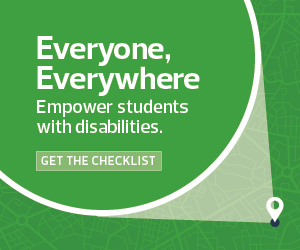“We’re aware of the controversy,” says Noor Syed, founding director of SUNY’s Center for Autism Inclusivity. “For that reason, we are [also] building an autistic supportive college through a multitiered system of supports. Our goal is to make this program compassionate, while our master’s program uses the ABA foundation for research … that suggests the best ways forward for improvement.”
To effectively help students with autism who encounter technology issues during online or hybrid learning, SUNY’s IT department will receive training on topics such as common autism co-diagnoses (anxiety is one), and effective communication practices such as visual aids.
The strengths-based model, which is humanistic rather than scientific, focuses on the individual’s strengths (including their personal strengths, as well as social and community networks). It works with individuals to help them overcome their unique barriers.
“We seek to empower our students rather than to change or fix them,” says Sanders Gardner. “We embrace their strengths and give them access to what they lack. We train our faculty — which includes our IT leadership team — to work with the individual to accept them as they are and to promote their well-being.”
MORE ON EDTECH: Empower professors and students to use accessibility features.
SUNY and Bellevue: Strengths-Based Model and ABA in Practice
Here’s how each institution would use its particular treatment plan.
SUNY/ Anderson Autism Supportive College:
SUNY bases its program on iterative research. The university ran eight focus groups and 20 interviews to assess autistic students’ needs. This evidence-based approach will be used throughout the initiative.
“Questions include: Is our training successful? Is our mentorship helpful? At the same time, it’s a bottoms-up approach,” Syed says. “I can’t ideate because I’m not neurodiverse. I go to them [our autistic students and autistic alumni] for feedback. Then I say, let’s do all of that. Let’s assess it.”
Bellevue’s Neurodiversity Navigators Program:
“We use a threefold approach,” Sanders Gardner says. “We support our students, praising their strengths and job skills. Second, we help them find ways to remove their barriers, whether it’s college accommodation, workplace skills, social relationships and so forth. Finally, we help them with self-advocacy, where they learn to speak up for themselves and their interests.”
In a March 2021 co-authored paper on what they’d learned from their remote learning experiences, Sanders Gardner and her colleagues recommended that program leaders work individually with students to assess their needs and provide academic, mental health and socialization support.
RELATED: Resolve remote learning struggles for students with vision and hearing loss.
Best Practices for IT Teams That Support Students with Autism
For IT team departments that support students with autism, it helps to keep the Cultural Iceberg concept in mind. When communicating with people on the spectrum, observers may see just the surface of the iceberg — only 10 percent of what that person meant to say.
“The best practices,” Sanders Gardner says, “are to answer their questions before asking specifics for clarification. Also, be as thorough and clear as possible when helping the student fix [technology] problems. Give them every single link needed. Focus on their requests, not the perceived tone of the request. It would also be good to put fixes in writing, using plain language. If you’re still uncertain whether you’ve understood them, turn to disability services or autism specialists on campus for help before proceeding.”
For ABA, all faculty and staff — including accessibility and IT specialists — receive training on understanding the impaired social interaction, limited communication and behavioral challenges of autism, as well as how to create task analyses and systems processing maps to break down instructions and steps into smaller, more manageable components.
“If a student encounters technical difficulty with online learning,” Syed says, “they can reach out to our IT support team via phone, email or ticket submission. The team is readily available and will work with the student to give them clear directions on how to proceed. Our IT colleagues will also receive training on how to support our autistic students.”
Ultimately, both modalities advocate a person-centered approach.
What’s the secret to an effective remote learning environment for students with ASD? Treat the person as a whole being, with the same needs, feelings and desires as anyone else.
EDITOR'S NOTE: An earlier version incorrectly stated that the Neurodiversity Navigators program started in 2019. The program started in 2010. EdTech regrets the error.











